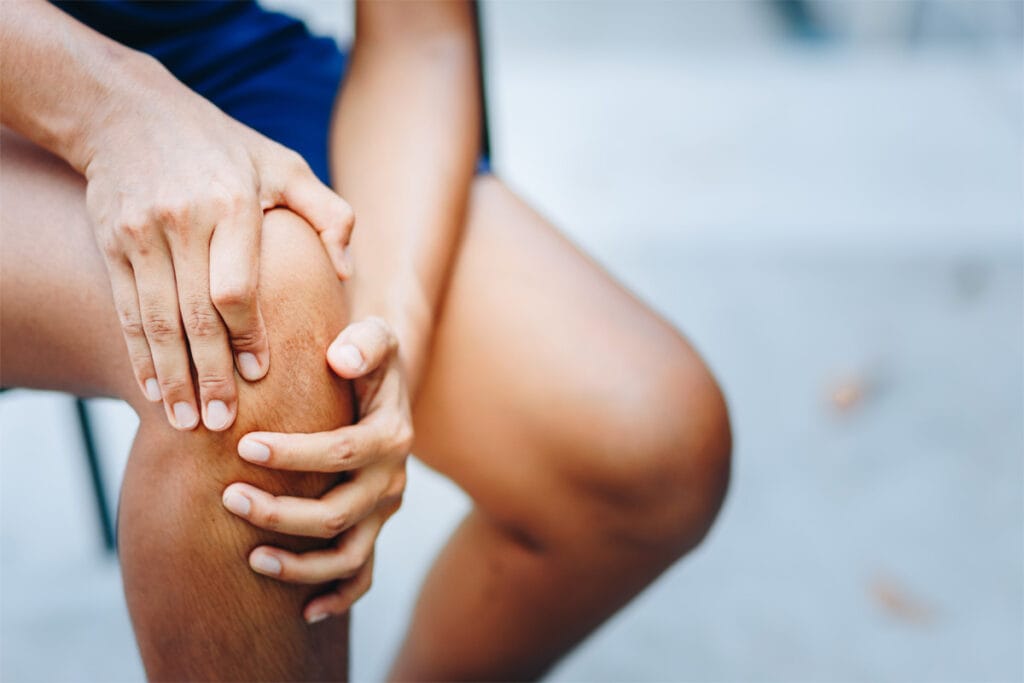
The Sports and Fitness Industry Association has named pickleball the fastest growing sport in the United States with over four million people now playing—almost double from 2017. Over the last two years its participation has grown by 39.3%. With this rise in popularity, there are also more people susceptible to pickleball injuries. Pickleball is known as a lifetime sport—including older adults. Despite lifetime sports being known as less strenuous than other activities, pickleball injuries can often be worse than they seem.
According to a 2021 study conducted by BioMed Central Ltd, the amount of senior (60–79-year age group) pickleball injuries is increasing rapidly. Even though the sport typically encompasses an older demographic, pickleball injuries can still arise in younger, more athletic players. An injury can occur at any moment during play time and it’s important to know the best ways to avoid pickleball injuries all together.
Pickleball injury statistics
The annual estimated number of pickleball injuries increased during 2013–2017. Across the nation, about 19,000 pickleball injuries occur every year. Because of this fast-paced sport, many are playing for several hours per day which leads to injuries from overuse.
The most common pickleball injuries were strains or sprains (28.7%) and fractures (27.7%). The affected body part was a lower extremity in 32.0% of the cases and an upper extremity in 25.4%. Frequent pickleball injuries include ankle sprains, Achilles tendonitis, wrist fractures, and hamstring or quadriceps muscle strains.
Advice to avoid pickleball injury
No one wants to get injured, especially while playing his or her favorite sport. Because pickleball can be played by various age groups, there are relatively easy ways to avoid pickleball injuries.
Warm up before a pickleball match
Because pickleball requires many quick, short movements, dynamic stretching and warmups are recommended before play time. Balance and stability exercises—along with cross-training—should include lateral steps, high-knee marches, skipping, and lunges to loosen muscles. There is no need to overdo it; players should make sure their body is warmed up and ready to play.
Wear safe pickleball gear
Pickleball is a speed game with continuous stops and starts. Supportive shoes can help prevent falls that lead to a majority of the sport’s sprains and fractures. Find comfortable shoes that have a good tread and are designed for tennis or pickleball played on a hard court.
Racquet sports such as tennis and pickleball continue to rank as one of the top activities linked to eye injuries. Some injuries can be serious enough to cause permanent loss of eyesight. Wearing shatterproof glasses or protective sunglasses can help reduce the risk of eye injuries. In addition, a visor or hat will also help protect your eyes and face from the sun, ultimately helping you see what’s happening during play.
Avoid backpedaling and wet acrylic surfaced courts
Because of the smaller court size, pickleball often leads players to backpedal when the ball is going over their head. Backpedaling can cause serious damage including falls, sprains, and fractures. With someone’s attention on the ball versus where they need to take his or her next step, backpedaling is one of the most common factors of pickleball injuries. Don’t backpedal—turn your hips toward the ball.
Also, help your pickleball partner by getting the ball if it goes over his or her head (and vice versa). If you can accommodate one another, there’s no need to backpedal because you’d be running at an angle to the back of the court.
Wet acrylic coated pickleball courts commonly enable injuries. Even though an acrylic court might look completely dry, wet spots can cause a serious slip. No matter how much tread you have on your pickleball shoes, it won’t stand up to water. It’s recommended to not play on wet acrylic coated pickleball courts, even if you have the urge to do so.
Play on a premier pickleball court
According to Recreation Management, a shock absorption level of 20% or higher is recommended for community use and well-being, and ideally a minimum of 30% or higher for competitive play.
Action Herculan PB Pro System provides up to 35% shock absorption versus painted-on surface alternatives such as acrylics. The PB Pro Court system is an eco-friendly, seamless, cushioned court system with point elastic properties. They combine high performance and durability with a recycled rubber base layer, a high-quality elastic polyurethane wear layer, and a structured polyurethane ultraviolet (UV) top-coating.
The flooring system can be installed indoors or outdoors to create a new playing surface or rebuild old hard courts. The Action Herculan PB Pro System is also resistant to UV and weather, providing a longer life of safe play. The polyurethane coating is slip resistant when wet, providing longer play and quicker return to play after pop-up showers. The Herculan polyurethane surface can be resurfaced quickly and economically while going longer between rebuilds.
Prevent pickleball injuries with a premier flooring system
Action Floor Systems will evaluate your site and your customers and find the best solution for your facility goals. Connect with an expert for your next project.
Action Floor Systems also provides sports surface solutions for gyms, fieldhouses, squash/racquetball courts, tennis, weight rooms, and arenas. For other flooring options, review these Action Floor Systems Recommendations.


















